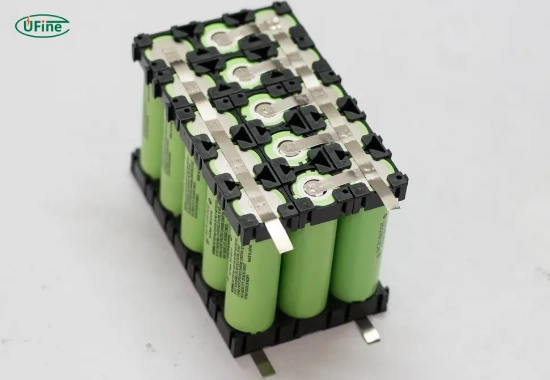An 18650 Battery Pack Calculator is a critical tool for optimizing power solutions and providing precision in assembling battery packs.
Its significance lies in streamlining the complex process of calculating and configuring batteries for various applications, ensuring efficiency and longevity.
This article aims to comprehensively explore the functions, importance, and practical use of the 18650 Battery Pack Calculator in achieving optimal battery pack configurations.
Part 1. Importance of battery pack calculation
Why use an 18650 battery pack calculator?
- Precision engineering: An 18650 Battery Pack Calculator offers meticulous precision, ensuring the accurate assembly of battery packs tailored to specific voltage, capacity, and configuration requirements.
- Safety assurance: Utilizing this tool minimizes the risks associated with mismatched or improperly configured batteries, safeguarding against potential hazards such as overcharging, over-discharging, or thermal runaway.
- Enhanced efficiency: By precisely determining the optimal configuration, it maximizes the overall efficiency and performance of the battery pack, ensuring longer lifespans and consistent power delivery.
- Customization for varied applications: The calculator allows customization based on diverse application needs, whether for consumer electronics, electric vehicles, or renewable energy storage, aligning the battery pack precisely with its intended use.
- Cost-effectiveness: Accurate calculations prevent unnecessary expenditures by precisely sizing the battery pack, minimizing excess capacity that may not be utilized efficiently.
Factors to consider in battery pack configuration
Voltage requirements
Understanding the specific voltage needs of the application is paramount. It involves aligning the total voltage output of the battery pack with the device or system it powers, ensuring compatibility and optimal functionality without under or over-voltage issues.
Capacity optimization
Determining the required energy storage capacity is crucial. Matching the pack’s total capacity to the application’s needs ensures sufficient power supply over the desired runtime, preventing premature depletion or excess capacity that can lead to inefficiencies.
Discharge rate and amp-Hour rating
Assessing the discharge rate and amp-hour rating of the battery cells is vital. It involves selecting cells with appropriate discharge capabilities to meet the power demands of the application without compromising safety or longevity.
Series and parallel connections
Strategically configuring series and parallel connections is pivotal. Series connections increase voltage, while parallel connections boost capacity and current handling. Balancing these configurations optimizes both voltage and capacity, tailoring the pack to specific power requirements. Maintaining uniformity and balance among cells in these configurations ensures consistent performance and longevity of the battery pack.
Part 2. Functions of a battery pack calculator
18650 Battery capacity calculation
The Battery Pack Calculator precisely determines the total capacity of a battery pack by considering the specifications of individual 18650 cells and the configuration of the pack.
Individual cell capacity: Initially, the calculator accounts for the capacity of each 18650 battery cell. These cells vary in capacity, typically ranging from 2000mAh to 3500mAh. The tool takes into consideration the exact capacity of each cell in the pack.
Configuration analysis: It factors in how these cells are configured within the pack. For instance, in series connections, the voltage increases while the capacity remains constant. Conversely, in parallel connections, the capacity increases while maintaining the voltage.
Calculation methodology: The calculator aggregates the capacities of all individual cells within the pack, incorporating the specific arrangement—whether in series, parallel, or a combination. By summing up these capacities, it precisely computes the total capacity of the entire battery pack.
18650 Battery voltage calculation
The Battery Pack Calculator plays a pivotal role in precisely determining the total voltage output of batteries configured in series and parallel setups.
Series connection calculation:
For batteries connected in series, the calculator accurately sums up the voltages of individual 18650 cells. It calculates the total voltage output by adding the voltage of each cell in the series. For instance, if four 18650 cells with a nominal voltage of 3.7 volts are connected in series, the total voltage output would be 14.8 volts (3.7V * 4 cells).
Parallel connection calculation:
In parallel connections, the calculator ensures that the total voltage remains the same as that of an individual cell while increasing the overall capacity. If, for example, four cells with 3.7 volts are connected in parallel, the total voltage output remains 3.7 volts while the capacity increases.
Combination configurations:
When configuring a combination of series and parallel connections, the calculator accurately calculates the total voltage by considering both the cumulative effect of series connections (which increase voltage) and the stability of parallel connections (which maintain voltage).
18650 Battery amp-hour rating and discharge rate calculation
The Battery Pack Calculator is instrumental in precisely computing the Amp-Hour (Ah) rating and discharge rate of configured battery packs, specifically those assembled with 18650 cells.
Amp-hour (Ah) rating calculation:
It calculates the total Amp-Hour capacity of the battery pack by aggregating the individual Ah ratings of each 18650 cell within the configuration. For example, if ten 18650 cells with a 2000mAh capacity each are connected in series, the total Ah rating would be 20Ah (2000mAh * 10 cells).
Discharge rate assessment:
The calculator assesses the discharge rate capabilities by considering the cumulative capabilities of the configured cells. It determines the maximum sustainable discharge rate for the battery pack based on the specifications of the individual cells.
Balanced discharge in series configurations:
In series connections, the calculator ensures balanced discharge among cells to prevent over-discharging of individual cells. This balance sustains the overall performance and longevity of the battery pack.
Parallel configuration impact on discharge rate:
For parallel configurations, the calculator evaluates the collective discharge capabilities of cells connected in parallel. It ensures that the configuration can deliver the required power without overstraining individual cells, maintaining safety and efficiency.
Part 3. Using the 18650 battery pack calculator
Step 1. Entering cell specifications
Start by entering the specifications of each 18650 cell: nominal capacity (mAh) and nominal voltage (V). For instance, input 2000mAh for capacity and 3.7V for voltage for each cell.
Step 2. Configuring series or parallel connections
Choose the configuration mode: select “Series” or “Parallel” to determine the arrangement of cells. For example, if configuring in series, input the number of cells in series (e.g., 4 cells).
Step 3. Input fields for configuration
In the designated fields, enter the number of cells in the selected configuration. If configuring in parallel, input the number of cells in parallel (e.g., 2 cells). This step helps the calculator understand the arrangement.
Step 4. Example calculation
Let’s consider four 18650 cells with 2000mAh capacity and 3.7V nominal voltage each. If configured in series (4 cells in series), input “4” for series configuration. Upon calculation, the total voltage output would be 14.8V (3.7V * 4 cells).
Step 5. Interpreting the results
Review the calculated values: observe the total capacity (Ah) and total voltage output. For the example, the total capacity would remain at 2000mAh, while the total voltage output reflects the series arrangement (14.8V).
Step 6. Adjusting configurations for optimization
Experiment with different configurations: alter the number of cells in series or parallel to see the impact on total capacity and voltage output. Adjust the configurations to match specific power requirements.
Step 7. Finalizing the configuration
Based on the calculated specifications that align with your application’s needs, finalize the assembly of the battery pack using the optimized configurations derived from the calculator’s results.
Part 4. FAQs
-
How do you calculate an 18650 battery pack?
To calculate an 18650 battery pack, you determine the desired voltage and capacity needed. For example, connecting cells in series increases voltage, while connecting them in parallel increases capacity. -
How many amps can an 18650 battery put out?
The maximum continuous discharge current for an 18650 battery varies, but high-quality cells can typically discharge around 10 to 30 amps, depending on the specific cell and its specifications. -
How many 18650 batteries can you put in parallel?
You can connect multiple 18650 batteries in parallel to increase capacity. The number of batteries in parallel depends on your requirements and the limitations of the charging system. -
Is it better to charge batteries in series or parallel?
Charging in series provides higher voltage while charging in parallel increases capacity. The choice depends on the device’s requirements and the desired voltage or capacity. -
What is the difference between parallel and series 18650 batteries?
Connecting 18650 batteries in series increases voltage while keeping capacity the same. Connecting them in parallel increases capacity while maintaining voltage. The choice depends on the desired output voltage or capacity of the battery pack.
Related Tags:
More Articles

Paper Battery vs. Flexible Battery: What’s the Difference and Which Is Better?
Paper vs. flexible batteries: learn the key differences, benefits, and which power source fits best for wearables, sensors, and smart tech.
What to Know Before Buying a Tiny LiPo Battery for Your Project
Tiny LiPo batteries are powerful and compact. Learn how to choose the right one for your project with specs, safety, and charging tips.
Bloated LiPo Battery: Will It Explode?
Will a bloated LiPo battery explode? Discover the causes, risks, safety steps, and expert tips to avoid disaster and protect your gear. Must-read safety guide!
12V 100Ah Lithium Ion Battery Price: Full Guide
Learn about 12V 100Ah lithium-ion battery price, from cost ranges to best brands, hidden fees, and how to get the best deal. A must-read for smart buyers!
Resistance and Conductivity: What It Means for Your Lithium Batteries
Resistance and conductivity impact lithium battery performance, lifespan, and safety—learn how they work and why they matter.





